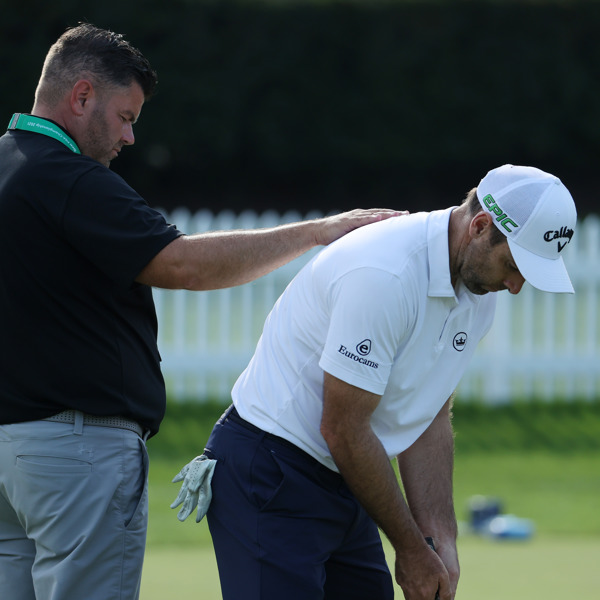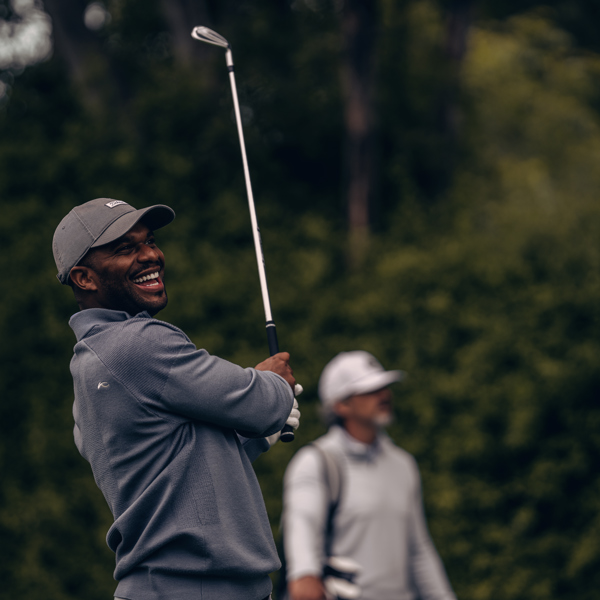The Swede will make his Ryder Cup debut ahead of playing in his first Major. PGA Professional Barney Puttick looks at what makes the Swede such an exceptional talent.
Ludvig Aberg’s rise from the amateur game to the Ryder Cup in the space of three months is already one of the most remarkable stories in the game. The former World No. 1 amateur is yet to play in a Major, has already won on the DP World Tour and his selection as one of Luke Donald’s six picks seemed the most obvious thing in the world.
“I played with him in Detroit and was blown away by his game,” explained Donald after picking the Swede. “He continued to impress and I challenged him to come over to Europe and play a couple (of events). He was fifth (tied fourth) in the Czech Masters and you know what he did yesterday (Aberg won in Switzerland). It was like a walk in the park for him and for someone that is so inexperienced it was just so, so impressive.”
“I really do have a lot of faith and belief in Ludvig. He is a generational player, he’s going to be around a long time and he’s going to do amazing things. If he wasn’t going to play this one he was going to play the next eight Ryder Cups, that’s how good I think he is. He proved it on Sunday, he’s a cool customer too. The statistics show he would be the number one driver this year, ahead of Rory McIlroy and Scottie Scheffler.”
Aberg describes his driving as one of his major strengths with an emphasis on hitting the ball hard and straight.
“I tried to hit it as hard as I could and tried to narrow it down a little bit after that. But obviously, the driver is the most fun club to hit. It goes the furthest. I felt that way since I was probably 10, and I still feel that way. I like hitting my driver, and luckily it's one of the better clubs in the bag, too.
“I like to keep it a pretty neutral flight. I don't like to curve it too much. Sometimes you get too stuck on one side where you draw it too much or fade it too much. When I grow up, I try to hit it as straight as I could and take it from there. Hitting the centre of the face was a big thing for me. Hit it hard but keep it in the centre of the face.”
Explained: Ludvig Aberg’s swing, by Barney Puttick
His swing is almost like he has stepped out of a computer game. What I love about it is the simplicity. The great John Jacobs described the golf swing as ‘two turns and a swish’ which almost describes Aberg’s swing perfectly. The symmetry is amazing. If you went on a PlaneSWING and moved the stick up and down, it’s almost as though he’s come out of a training wheel, it’s such an impressive load up.
We can all learn from how he maintains his height through the swing, especially for a tall guy. A lot of amateurs anticipate the ball and dip into it but he maintains that level all the way through.
Rhythm wise it’s brisk. For me it’s almost like a speeded-up version of Ernie Els and I like the way that he plays. He makes his decisions briskly and then hits the shot.
He is 6”3 and he has some terrific levers to produce a high launch and a low spin. I’ve only seen his swing on camera but it doesn’t seem that there’s much of a shot shape – with his skill base he will be able to hit it either way with ease, with the driver it just looks like it is bullet straight.
His coaches say that he is able to take his practice ground game out onto the course which is what we all dream of.
From the stats there are areas where he can make some progress with the putter. People forget what a great putter Tiger Woods was and, had he never won a Major, people would have likened his putting to someone like Brad Faxon.
A lot of players have stuck to their style from day one, players like Colin Montgomerie or Steve Stricker, and I would strongly say to keep swinging it the same and not play around with that at all.
He’s unknown in terms of how he’ll deal with nerves on the big stage, we haven’t seen him in a Major yet, but he’s done pretty well so far and his rise has been phenomenal. Players who have played with him have raved about him and you have to respect that.
He and Viktor Hovland both have a great disposition on the course, they drill it and then start smiling which is very refreshing.”
About Barney Puttick
Barney turned professional in 1979 and worked under Ian Connelly who was best known as Sir Nick Faldo's original coach. He was once tied for third with Greg Norman in a 36-hole tournament in Cannes, behind Corey Pavin. Puttick, a Fellow of the PGA, has been the head professional at Mid Herts GC since 2000, he has given over 45,000 lessons and he is a Golf Monthly Top 50 coach.











